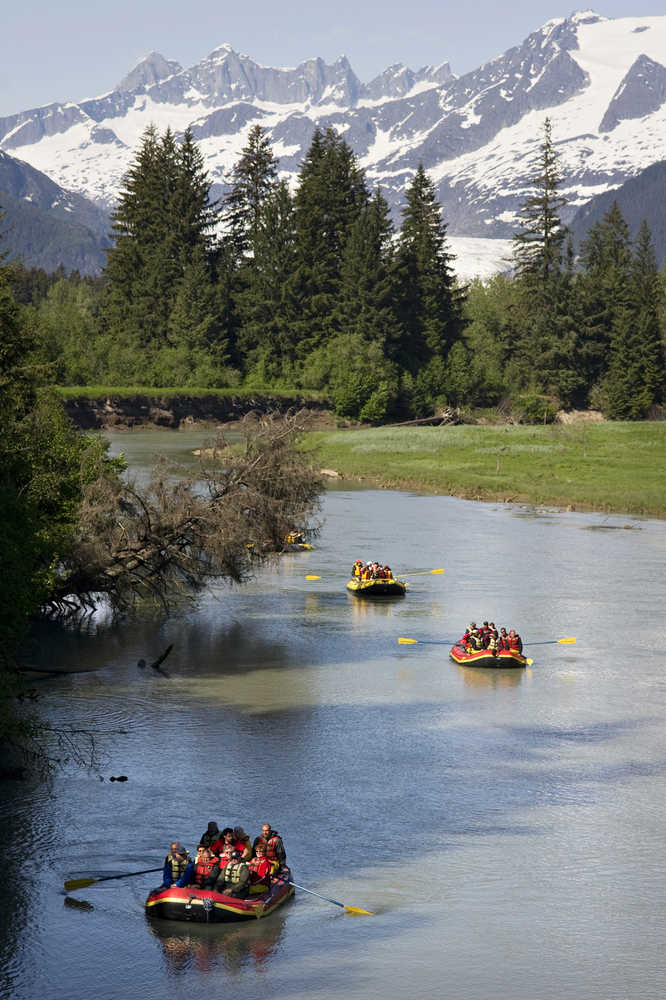ANCHORAGE — The recent deaths of two women during a rafting excursion illustrate not only how unpredictably dangerous Alaska’s wilderness can be, but also how limited resources are in the nation’s largest state.
The women’s families are questioning why it took so long for help to arrive, but one official notes the nearest rescuers had to travel hundreds of miles and deal with all the logistics that go with it. In Alaska, the harsh reality is that people are literally on their own when they veer away from the limited road system of the state, which is more than two-and-a-half times the size of Texas but with a population equal to the metro area of Baton Rouge, Louisiana.
“Unfortunately, we do not have rescue assets within close proximity of every region in our state, and sometimes capability, proper resources, and timeliness in response to an incident is not immediately available,” Alaska National Guard spokeswoman Lt. Col. Candis Olmstead said in an email to The Associated Press.
An average number of recreational backcountry deaths or rescues involving out-of-state visitors in recent years was not immediately available.
Alaska National Guard officials say the response mission to the rafters involved military aircraft from as far away as Anchorage —a trip of nearly 600 miles, the same distance between Chicago and Atlanta. Officials also point to unforeseen complications, including time lost after a rescue crew member’s medical emergency that forced responders to turn around. What’s more, an earlier response launched in an Army helicopter had to be scrapped after the crew realized the location was much farther than originally thought.
Cheryl Minnehan, 69, of Elk Grove, California, and Karen Todd, 67, of Sparks, Nevada, died June 15 after their raft overturned during a guided excursion on the Kongakut River in the state’s remote North Slope. The operator, Alaska Alpine Adventures, said the women were among eight guests and two guides at the tail end of a 12-day excursion.
Minnehan and Todd were in the third raft to launch among the five crafts shortly after noon. The previous day the party waited for rain-swollen river waters to recede. No one saw the women overturn, just the aftermath, in the only 2-mile stretch of the 70-mile river with Class 3 rapids. One of the two guides tried to toss rescue bags to the women but failed to reach them, said lead guide and company owner Dan Oberlatz, who was in the fifth raft.
Oberlatz saw one of the orange-vested women about 300 yards ahead moving quickly downriver. Oberlatz began paddling furiously to try to catch up in his slower, loaded raft, but she disappeared around an S curve with two sharp turns. Oberlatz was also scanning the bank for a second life jacket while trying to navigate the whitewater conditions, he said.
Up ahead was the person in the orange vest. She had gotten trapped and spun and submerged in a swirling section of the water at the edge of the cliff on one side of the river. After surfacing, she was motionless and face down in the water. Oberlatz said he couldn’t get close with the raft, and he immediately pulled over in the only place it was safe to land — a gravel bar on the opposite side of the river, sobbing all the while. In his 18 years in business, his company has never had a single fatality before, he said.
“Both of these women are friends of mine,” he said, adding that both went on another excursion with the company three years ago.
After landing, Oberlatz checked on his passenger, another guest, then ran upstream along the bank to get a better look at the woman’s location and formulate a whitewater rescue plan. Before he got more than 20 yards, the current pushed the woman out of the swirling water and she floated past, face down in the main part of the river before disappearing around a small bend.
To Carol Sewell, Todd’s partner of more than two decades, Oberlatz’s decision to not continue down the river to look for the second person, given the frigid water and the possibility of hypothermia, was a fatal one. The second victim’s body was found the following day.
“He was the only hope,” Sewell said.
Oberlatz said he was confident the person he saw was dead, and he continued to look for the second rafter. But he also had to think about the seven people beside himself who were alive.
“My priority at that point was to not create another victim,” he said.
A satellite phone call to his company put in motion a response to the Alaska Rescue Coordination Center. Responders wouldn’t arrive until about 4 a.m. the next day, according to Oberlatz. That night, members of the excursion party grieved for the women and tried to comfort each other, holding on to a thread of hope that one of the two might still be alive. The survivors eventually were flown by North Slope Search and Rescue crews to the community of Deadhorse. North Slope Borough police are investigating the deaths.
Minnehan’s daughter Jennifer and the daughter’s fiance, Aaron Collier, said they don’t understand why it took responders a full 20 hours to recover the bodies from the water after they first went in. Collier said he was told at one point that an early National Guard flight had to be scrapped after a crew member was stricken with food poisoning.
“My feelings are . . . it took way too long to get any type of search and rescue going,” Collier said.

